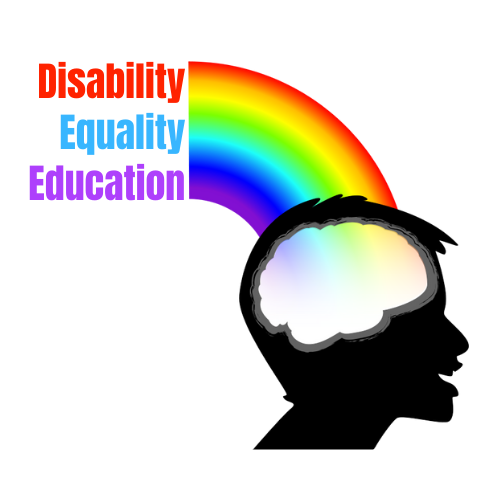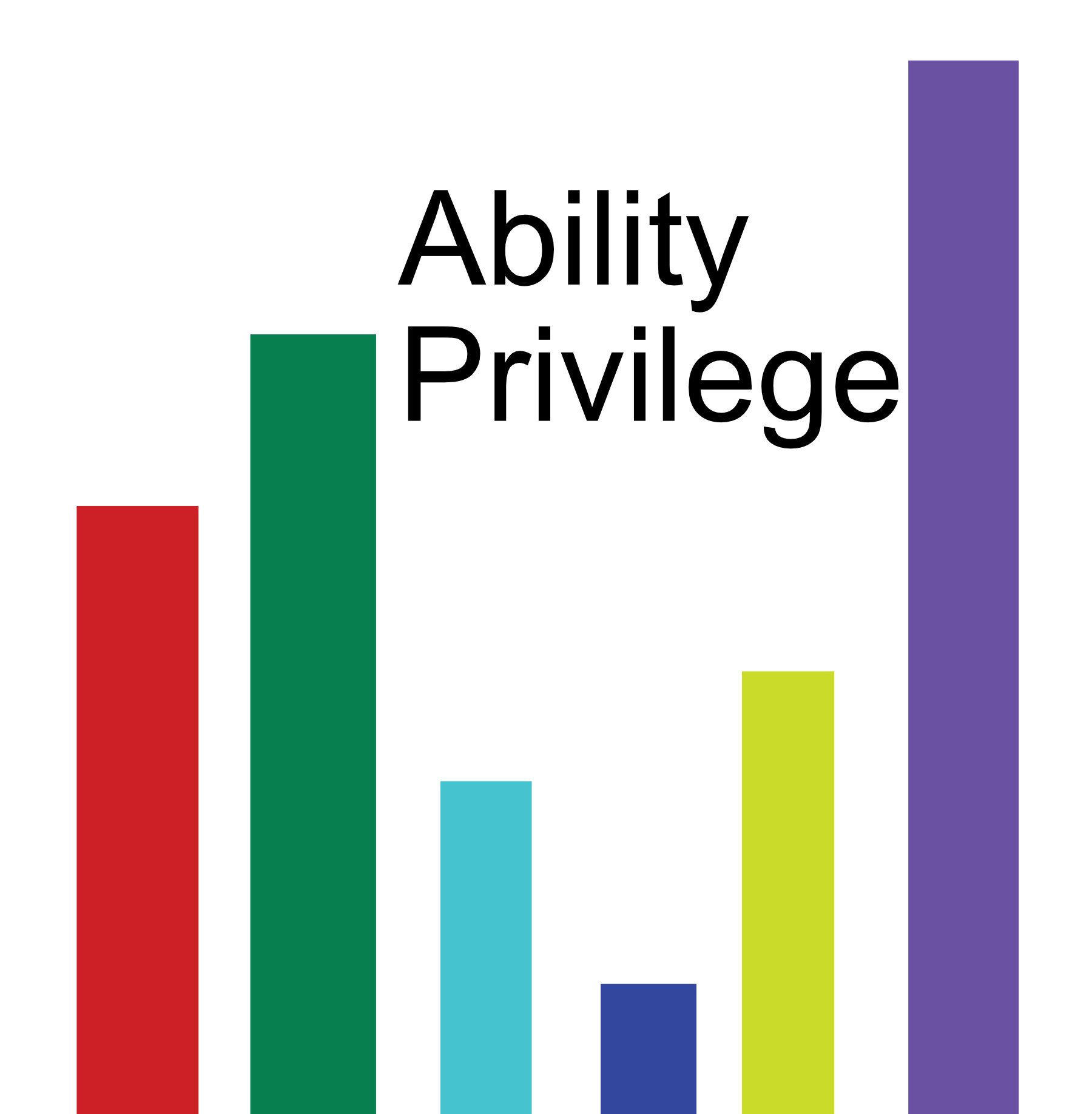
Ability Privilege Lesson
This activity is designed for students to reflect on their own lives and their privilege status. Unfortunately in our society certain groups can navigate with ease, while others must fight for their basic rights. Students will reflect on how their ability (able-bodied or disabled) affects their lives and how they can use their privilege to help others.
Image Description: various heights of different colored bars lined up next to one another. The words “Ability Privilege” towards the top.
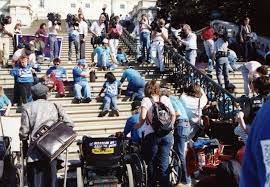
Access is a Civil Right - Capitol Crawl
This lesson plan is a guide for how you can have a discussion with your students about the history of the ADA and, more specifically, the Capitol Crawl, which was a protest that was successful in urging congress to vote on the ADA. The lessons center around a 9 minute video that tells the story of the Capitol Crawl. There is a worksheet that goes with this lesson.
Image description: photograph of dozens of protesters on the steps of the Capitol building. Some are standing, some in wheelchairs, many are crawling up the steps.
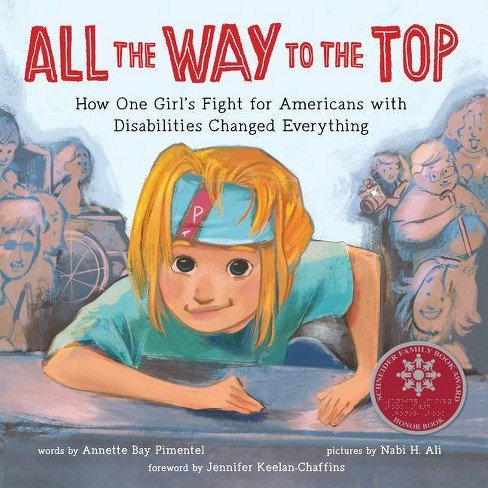
“All The Way To The Top” book lesson plan
In this lesson students will learn new vocabulary words and explore important civil rights themes by reading the book “All the Way to the Top” by Annette Bay Pimentel. “All the Way to the Top” tells the childhood story of Jennifer Keelan-Chaffins, who climbed all the way to the top of the stairs of the US capitol in 1990 to encourage congress to pass the Americans with Disabilities Act (ADA). Jennifer has cerebral palsy and became famous for the photos taken of her while climbing the stairs without a wheelchair at just 8 years old. The book tells the story from her perspective and covers how she felt she was not treated equally in her community and how she and other activist worked to get the ADA passed.
Image description: Cover artwork for “All the Way to the Top”

Analyze a Poem for Theme - DEE the Chickadee
This lesson will help students to analyze the theme of a poem. Students will compare their understanding of how they view disability before and after reading the poem. Students will compare the message and theme of the poem and contrast the bird in the poem to the life of a person with a disability.
Image Description: Chickadee sitting in a baseball hat

Astrophysicist Dr. Wanda Diaz-Merced: Introduction to Sonification
This is a lesson about Astrophysicist and Computer Scientist Dr. Wanda Diaz-Merced who is a blind scientist who studies the stars by listening to data converted into sound through a process called sonification.
Sonification is the use of non-speech audio to convey information or perceptualize data. To put it more simply, Sonification is the process of using sound to convey information or turning data into sound. Sometimes, sonification can convey more detailed information better than visual representation can.
Sighted and blind people use sonification to gather information. And blind people can use sonification to study the stars and the universe.
This lesson can supplement Science units about Sound, Space, or Technology. It can even be adapted to supplement Music lessons about pitch and tone.
Image Description: The image is a digital artwork featuring a black and white photo of a Wanda Diaz Merced, who is wearing a headset with a microphone and appears to be speaking. She is set against a colorful, abstract background that includes a large orange circle, a smaller yellow circle, and a blue brushstroke. There are also various abstract shapes and patterns, including dots and lines, scattered around the image. On the left side, vertically, it says "SONIFICATION OF STARS" and on the right side, horizontally, it reads "WANDA DIAZ MERCED" in yellow text.

Birthday Party Lesson Plan
In this lesson, students will consider what accommodations they can make in order to be more inclusive of their peers with disabilities.
Image description: Photo of cake, birthday hats and Happy Birthday banner

Black Disabled Art History Lesson
Students will select a Black Disabled artist from Leroy Moore’s Black Disabled Art History 101. Students will research their selected artist and their works. Students will choose a piece of artwork created by this artist and analyze it using a critical artistic framework. This lesson can be adapted for a wide range of ages.
Image description: Cover photo of Black Disabled Art History 101
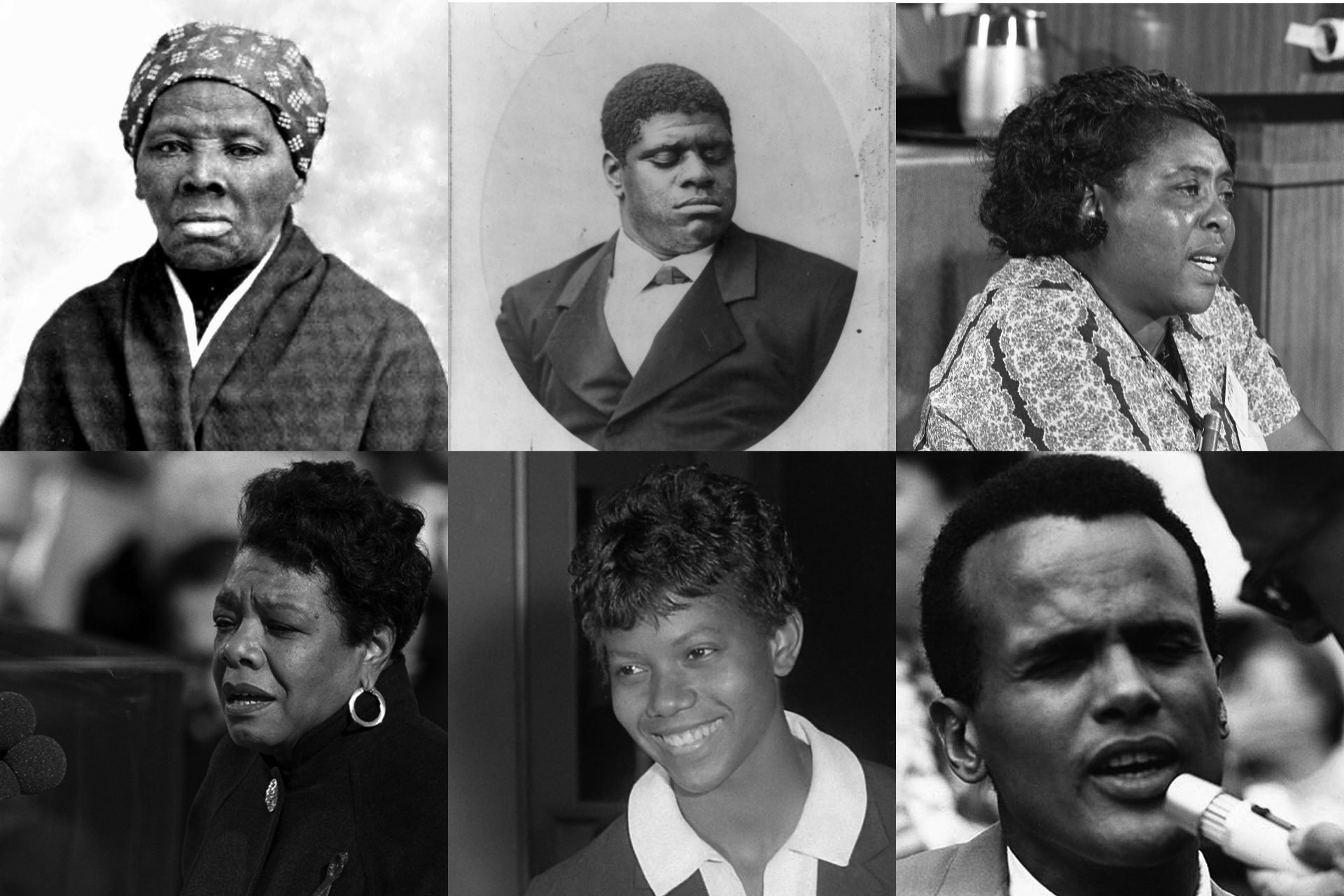
Black Disabled History Lesson
In this lesson, students will be invited to research a famous Black Disabled person, either from history or modern day. Students will work in groups or individually to research their assigned person and create a final project in a creative format. Students will then present their findings to the class.
Image description: Photos of 6 famous Black Disabled people: Harriet Tubman, Tom Wiggans, Fannie Lou Hamer, Maya Angelou, Wilma Rudolph, and Harry Belafonte
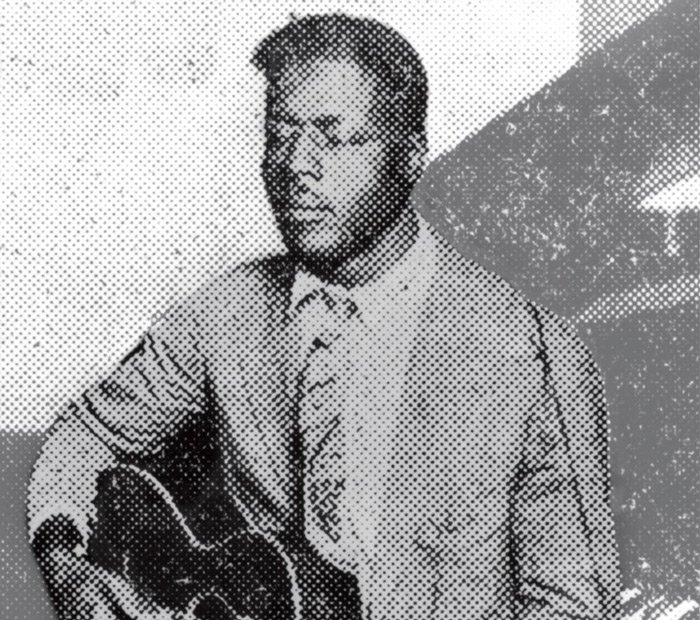
Blind Willie Johnson Lesson
Students will learn about one of the most influential blues guitarists of the early 1900s, Blind Willie Johnson. They will read an article detailing his life and how he is remembered. The class will then listen to an example of his music, and covers of his music. Students will also discuss how blind musicians can help advance the discussion concerning the stigma of disability.
Image description: halftone photograph of Blind Willie Johnson

Book Read A Loud Video List
On the YouTube page linked you will find a playlist with dozens of read a loud videos of books that we believe will add opportunities to incorporate disability representation in natural, positive ways to your class.
Image description: colorful books on a dark bookcase

Build A Web - Interdependence Lesson
Students identify with each other some things they like and pass around a ball of twine. The twine represents a web and every student will be holding a part of it to keep it strong. Students will reflect on their own webs in their lives and create their own webs using crafting materials.
Image description: spider web

Calculating the Distance Lesson by Rick Hansen Foundation
In this lesson, students complete grade-appropriate math problems using facts and figures from Rick Hansen’s Man In Motion World Tour. Students will examine mathematical problems evolving out of the day-to-day challenges of Rick Hansen’s Man In Motion World Tour. Students will apply multiplication and division skills to real-life math problems. Students will apply conversion skills to real-life math problems.
Image Description: Logo of Rick Hansen Foundation.
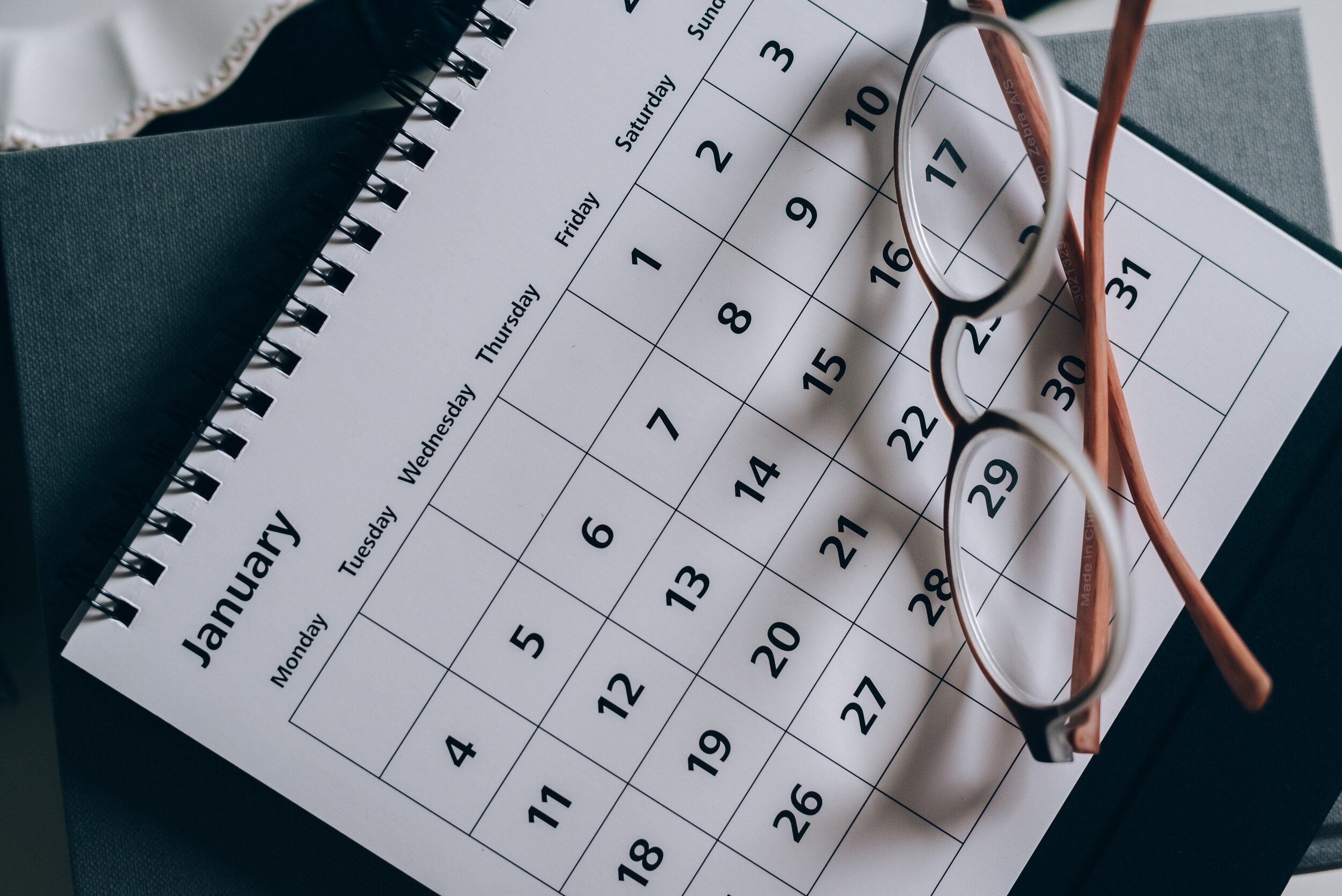
Calendar of Events
A calendar of events that recognizes various days (and months) is an easy way to bring the conversation about disability into your classrooms and schools. Including discussion of disabled people throughout the year sends a message to all that disabled students are recognized and valued as a part of the education community.
Image description: calendar page tilted at an angle, reading glasses rest on the bottom corner of the calendar
Circle of Friends Lesson
Students will participate in an exercise and discussion on disability and segregation. In this lesson students will map out social interactions in their everyday lives. After they complete the exercise the teacher will facilitate a discussion on segregation. Students with disabilities who grow up in institutions are effectively segregated from the rest of the population, so their social circles tend to look very different from the students in class. This lesson is split into two class periods.
Image description: Overlapping circles with various disability icons inside each circle

Circles Lesson Plan
This lesson will use wheelchair wheels to teach the concept of circles. Students will identify circles in wheelchair wheels and then draw/sculpt their own.
Image description: 2 wheelchairs and 4 circles
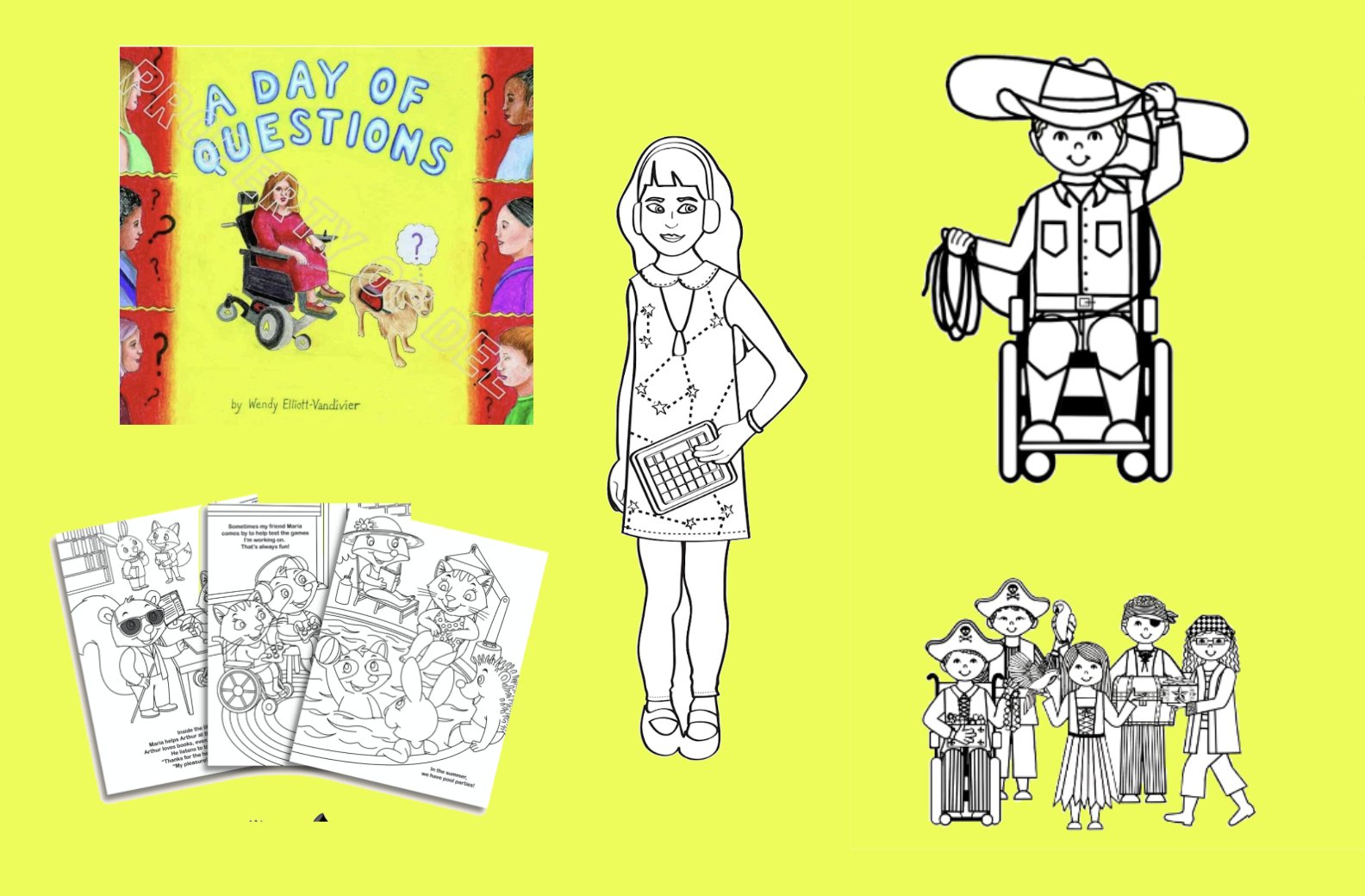
Coloring Books, Pages and Clip Art with Disability Representation
Including coloring pages and artwork in lessons (some of these allow you to use as clip art) that includes disability representation furthers the goal of regularizing disability by seeing it and offering opportunities to learn and ask questions.
Image Description: small images of the coloring books on a yellow background

Common Lit - Analyzing the Author's Point of View with "I'm a Disabled Teenager, and Social Media Is My Lifeline" Lesson
In this opinion piece, students will learn about one teenager’s perspective on the value of social media, especially for people with disabilities. Students will analyze the author’s point of view about social media.
Image Description: Logo of CommonLit which looks like an open book

Common Lit - Analyzing Text Structures with "Everyone Can Play" Lesson
In this text, students will learn about how video games are being adapted to meet the needs of players with disabilities. Students will practice analyzing text structures. They will understand how paragraphs build on one another and how authors organize their writing using specific text structures such as subheadings.
Image Description: Logo of CommonLit which looks like an open book

Concentric Circles Lesson
In this lesson students will contemplate how they perceive disability and explore stereotypes and misconceptions of disability through a circle discussion activity. This lesson is intended as an introductory activity on disability. Students are just beginning the discussion on disability.
Image description: rainbow concentric circles
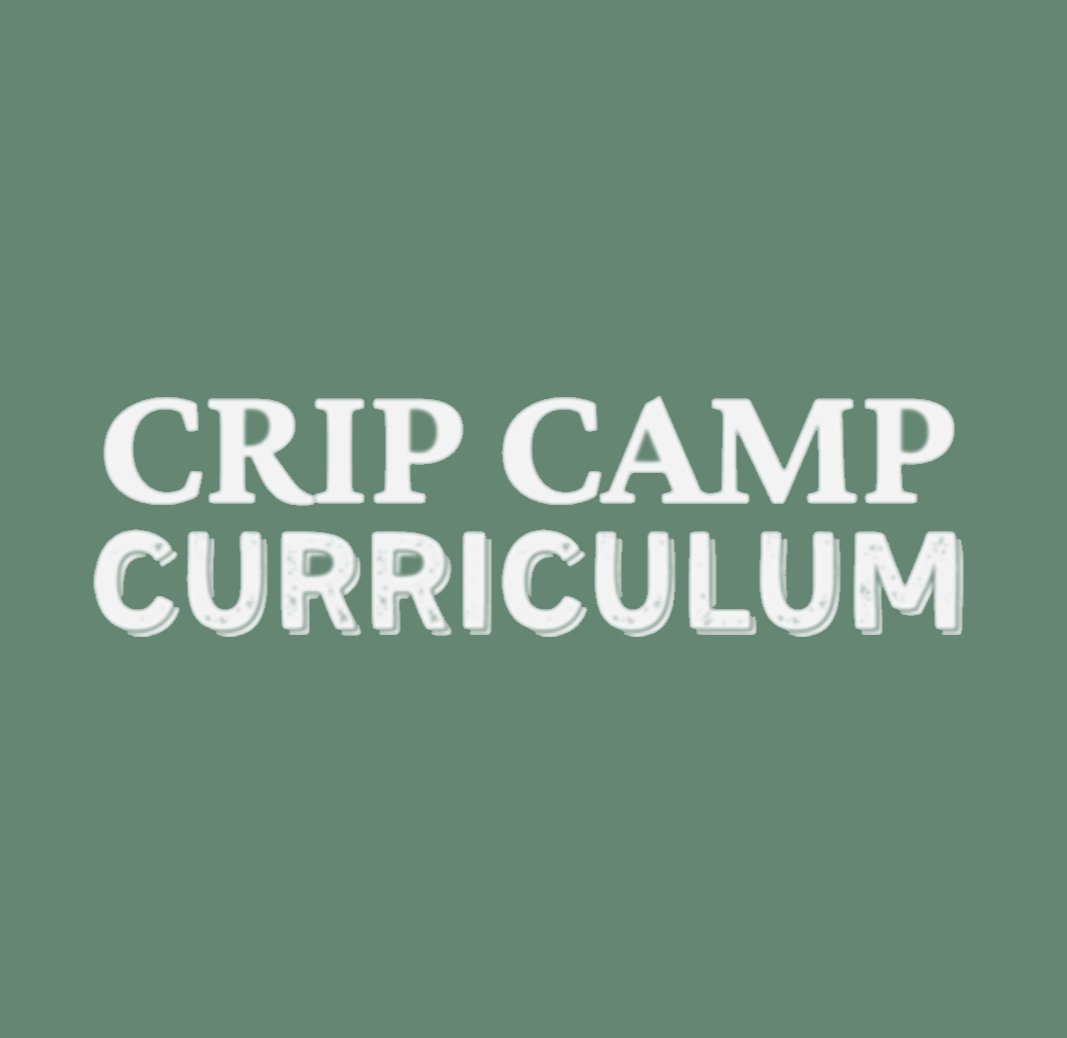
Crip Camp Curriculum
In this collection of lesson plan, students will learn about media literacy and apply those skills to the media created for the film CRIP CAMP; will explore the concepts of power and justice, and how they relate to disability rights and disability justice; will explore the concepts of power, civil rights, and human rights, and how these concepts relate to disability rights, and then apply those skills to the media created for the film CRIP CAMP; will understand how language is connected to power and ableism; and discuss how the strategic use of power helped the disability rights movement in the US evolve.
Image Description: “Crip Camp Curriculum” in white text on green background
